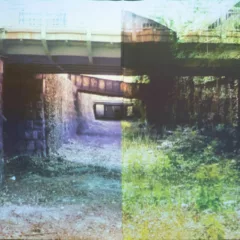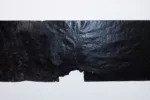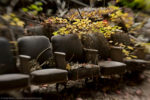Oceanic in more ways than one, Edward McHugh’s photographs are expansive and infused with a headiness that is usually the province of nineteenth-century landscape painting; a large-scale sensuality reveals their Law of Reflection. The law of reflection is the name for the scientific principle explaining reflected light — McHugh’s works are scenes that use reflections in water to infuse their surrounding environments with alchemical magic.
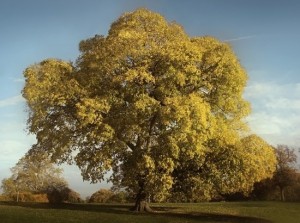

Wax-diffused Pigment Print.
Resin and acrylic, applied to the finished digital photos printed on canvas, combine to enhance the bodies of water, the focal point of each photograph. What would be merely the equal and opposite effect of light hitting a surface is given the power of revealing what lies beneath. McHugh’s methods capture different light patterns and depths and hint at microclimates within the larger body. As you stand facing one of his pieces head-on, you are struck by the spontaneity of the patterns made by his unpredictable applications of resin, acrylic and pigment diffused with wax to give a heightened sheen. It’s unreality on top of unreality, but it’s immersive reality. In some cases, such as “Celestun,” McHugh appears to reverse the earth and sky.
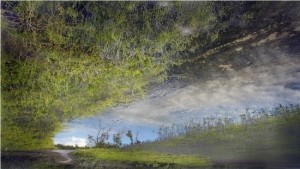
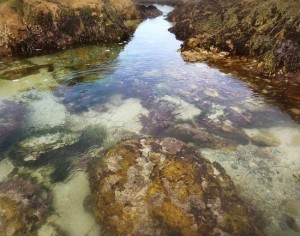
Wax-diffused Pigment Print.
In virtually every piece, the surface media effects and composition do their astonishing work in tandem, creating an expression of not just any stream or river, but, seen from certain angles, entirely new landforms. “Monterey Rock” is a perfect example of how transcendent McHugh’s way with composition can be.
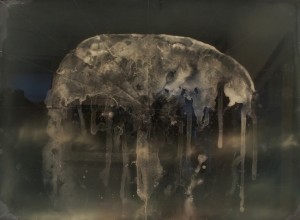
Acrylic paint, ink, thread and resin on linen. 24x33in.
The real wonder of Law of Reflection for me is that, for all the grandeur and infinitesimal detail, the works are also incredibly immediate. The original shots have lost none of their majesty no matter how much McHugh’s processing has altered their foundation.

Acrylic paint, ink, thread and resin on linen.
18 x 24in.
Edward McHugh’s “Law of Reflection” is up until December 4th at Gallery 339, 339 South 21st St, Philadelphia.


